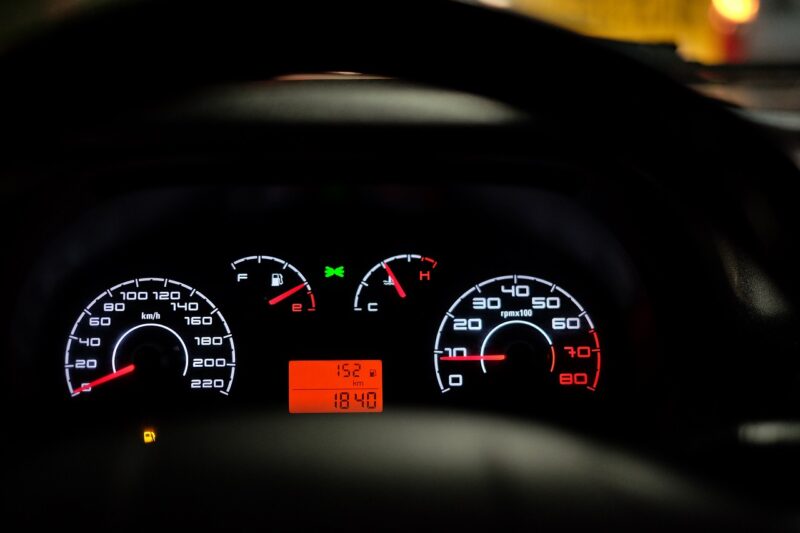How Cars Have Become Rolling Computers and What It Means for Drivers
November 11, 2024

In the past few decades, the automobile industry has undergone a remarkable transformation. Cars, once viewed as mere mechanical devices designed for transportation, have evolved into sophisticated machines packed with technology. Today’s vehicles can be seen as ‘rolling computers’ equipped with advanced software and hardware that enhance user experience, safety, and performance. This evolution is reshaping the way we think about driving, maintenance, and what it means to be behind the wheel.
1. The Rise of the Rolling Computer
The transformation of cars into rolling computers began with the adoption of electronic control units (ECUs) in the 1980s. These onboard computers manage various vehicle functions, from engine performance to safety systems. Modern vehicles now contain dozens of ECUs, each responsible for monitoring and controlling a specific aspect of the car’s operation.
The shift to digital technology has not only made cars more reliable, but it has also enabled significant advancements in fuel efficiency, emissions control, and overall performance. The integration of computer systems opens the door for numerous innovations, from advanced driver-assistance systems (ADAS) to in-car infotainment features.
2. Key Technologies Behind the Transformation
Today’s vehicles are equipped with cutting-edge technologies that allow for seamless communication between the driver, the vehicle, and the surrounding environment:
- Advanced Driver-Assistance Systems (ADAS): Features such as adaptive cruise control, lane departure warning, and automatic emergency braking rely on a network of sensors, cameras, and radar systems that process data to assist drivers and enhance safety.
- Infotainment Systems: Modern infotainment systems combine entertainment, navigation, and communication functionalities, allowing drivers to access music, apps, and directions seamlessly while on the road.
- Connectivity: With the rise of the Internet of Things (IoT), cars can now connect to the internet, providing updates, real-time traffic information, and vehicle diagnostics directly to the driver’s smartphone or car display.
- Electric and Hybrid Technologies: The push towards electrification has led to the development of vehicles that rely heavily on computer systems to manage battery life, energy consumption, and regenerative braking, maximizing efficiency while reducing emissions.
These technologies contribute to an enhanced driving experience, but they also introduce challenges and considerations for modern drivers.
3. Implications for Drivers
The transition to rolling computers has reshaped the responsibilities and experiences of drivers:
- Increased Complexity: While modern cars offer numerous benefits, the increased complexity of vehicle systems can be daunting for some drivers. Familiarity with technology is becoming as essential as traditional driving skills, as understanding how to operate and troubleshoot these systems can greatly enhance the driving experience.
- Reliance on Software Updates: Just like computers, cars now receive regular software updates to enhance functionality, fix bugs, and improve security. Drivers must stay informed about these updates, as ignoring them may compromise vehicle performance or safety features.
- Privacy and Data Security: With connectivity comes the risk of data breaches and privacy concerns. As vehicles collect and transmit data, drivers should be mindful of how this information is used, particularly regarding location tracking and personal data access.
- Enhanced Safety Features: ADAS and other smart technologies improve road safety, reducing the likelihood of accidents and enhancing the overall driving experience. However, these features should not replace attentive driving; they are designed to assist rather than entirely take over control.
4. The Future of Driving: Cars as Computers on Wheels
As technology continues to advance, the automotive landscape is poised for further transformation. Here are some emerging trends that show how vehicles will evolve:
- Autonomous Vehicles: Self-driving technology is at the forefront, with companies investing heavily in research and development. While fully autonomous vehicles are not yet mainstream, significant progress has been made, with some cars already offering limited self-driving capabilities.
- Integration of AI: Artificial intelligence capabilities are becoming increasingly prevalent in vehicles, enhancing decision-making processes, predictive maintenance, and tailored driving experiences based on user preferences.
- Sustainability Initiatives: The automotive industry is shifting towards sustainable practices. Cars are being designed with recycled materials, and electric vehicle technology is paving the way for greener alternatives to traditional combustion engines.
- Enhanced User Experience: Future vehicles will prioritize user experience further by integrating augmented reality dashboards, voice-activated controls, and hyper-personalized infotainment systems to make driving more enjoyable and intuitive.
The future of driving promises exciting possibilities, but it also requires drivers to adapt to new challenges and navigate the evolving landscape of automotive technology.
Conclusion
As cars increasingly become rolling computers, they are redefining how we approach driving and vehicle maintenance. While this evolution ushers in enhanced safety, comfort, and efficiency, it also presents new responsibilities for drivers in terms of technological literacy, data privacy, and security. Understanding these changes and adapting to the new driving ecosystem will be crucial in optimizing the experience of operating a modern vehicle.
As we move forward into a future defined by innovation, staying informed and engaged with the technology in our cars will empower us to harness their full potential, ensuring that our journeys are not only safe but also enjoyable. Whether you’re a tech enthusiast or a traditional driver, embracing this change is the key to navigating the road ahead effectively.





